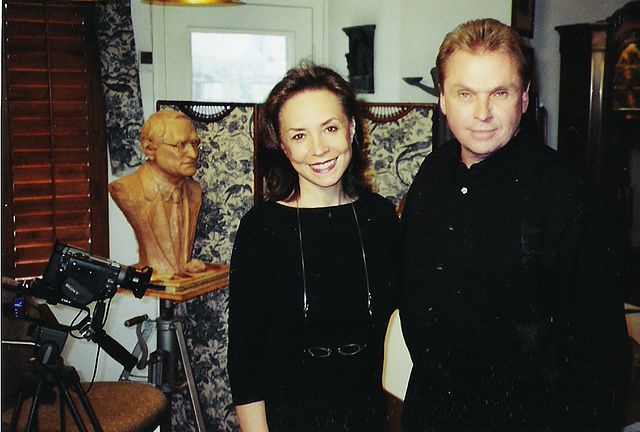Karen T. Taylor is an American forensic and portrait artist who has worked to help resolve criminal cases for a variety of law enforcement agencies throughout the world. Her primary expertise includes composite imagery, child and adult age progression, postmortem drawing and forensic facial reconstruction. In the mid-1980s, Taylor pioneered the method of 2-dimensional facial reconstruction, by drawing facial features over frontal and lateral skull photographs based on anthropological data. Taylor is also well-established as a forensic art educator, fine art portrait sculptor, and specialist in the human face.
Taylor filming an episode of America's Most Wanted with correspondent Ed Miller
Taylor working on the reconstructed Bo Man from Southern China
Forensic facial reconstruction
Forensic facial reconstruction is the process of recreating the face of an individual from their skeletal remains through an amalgamation of artistry, anthropology, osteology, and anatomy. It is easily the most subjective—as well as one of the most controversial—techniques in the field of forensic anthropology. Despite this controversy, facial reconstruction has proved successful frequently enough that research and methodological developments continue to be advanced.
Tsar Ivan the Terrible of Russia – reconstruction by M. Gerasimov, Soviet archaeologist and anthropologist who developed the first technique of forensic sculpture, 1965.
An example of a 2D facial reconstruction conducted by forensic artist Karen T. Taylor, and the subsequent identification, April Dawn Lacy.
Forensic facial reconstruction of Alberto di Trento by Arc-Team and the 3D artist Cicero Moraes
Skulls for facial approximation






